New Mythologies of Central Asia:
Saule Dyussenbina (Kazakhstan), Dilyara Kaipova (Uzbekistan) and Aziza Shadenova (Kyrgyzstan, Uzbekistan)
Curated by Salima Sarsenova and Zhanna Guzhavina, Sapar Contemporary Central Asian Incubator
Essay by Marissa Moran Jahn, faculty at MIT and The New School.
February 25 - March 24, 2020
Opening reception February 25, 2020, 6-8 pm





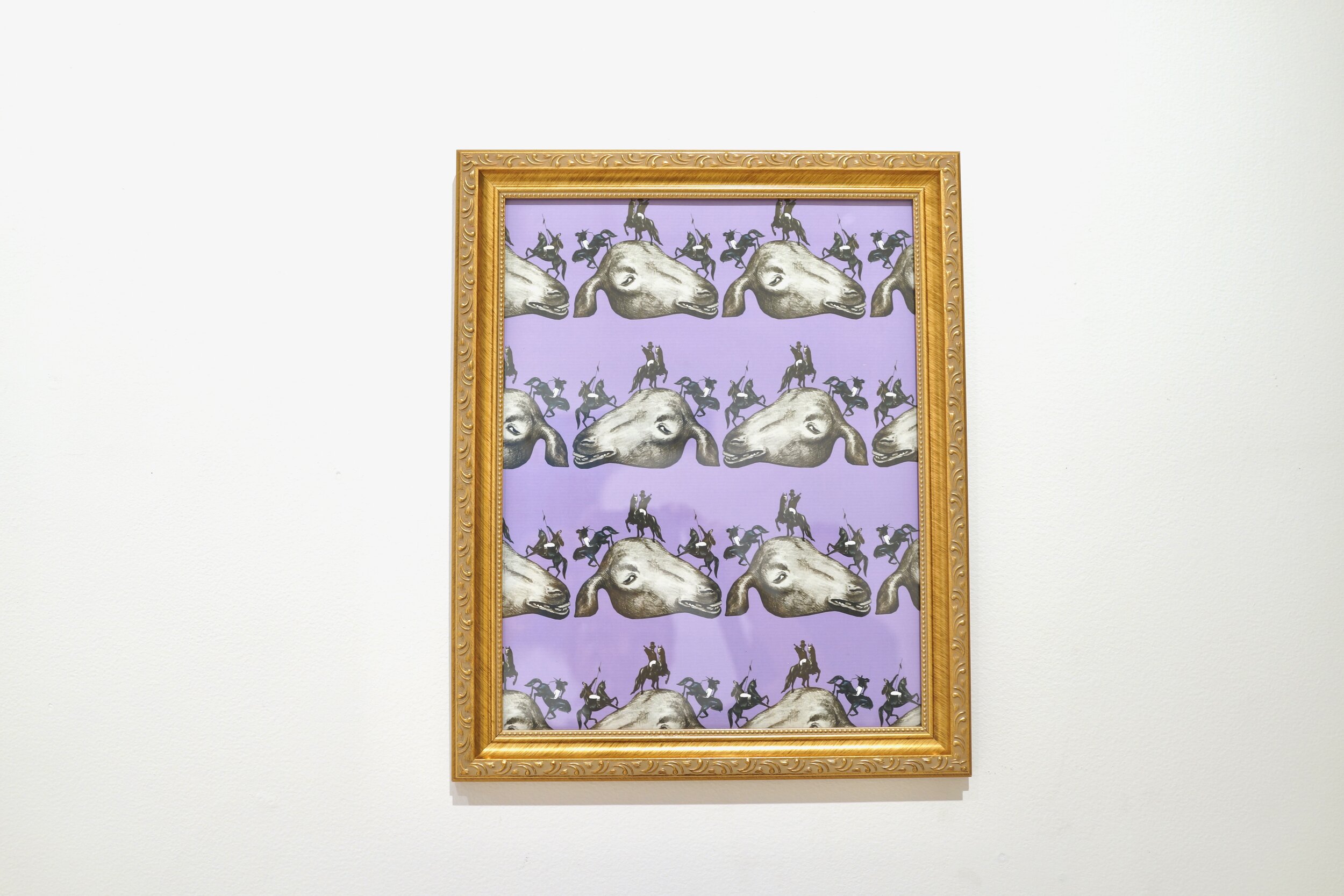

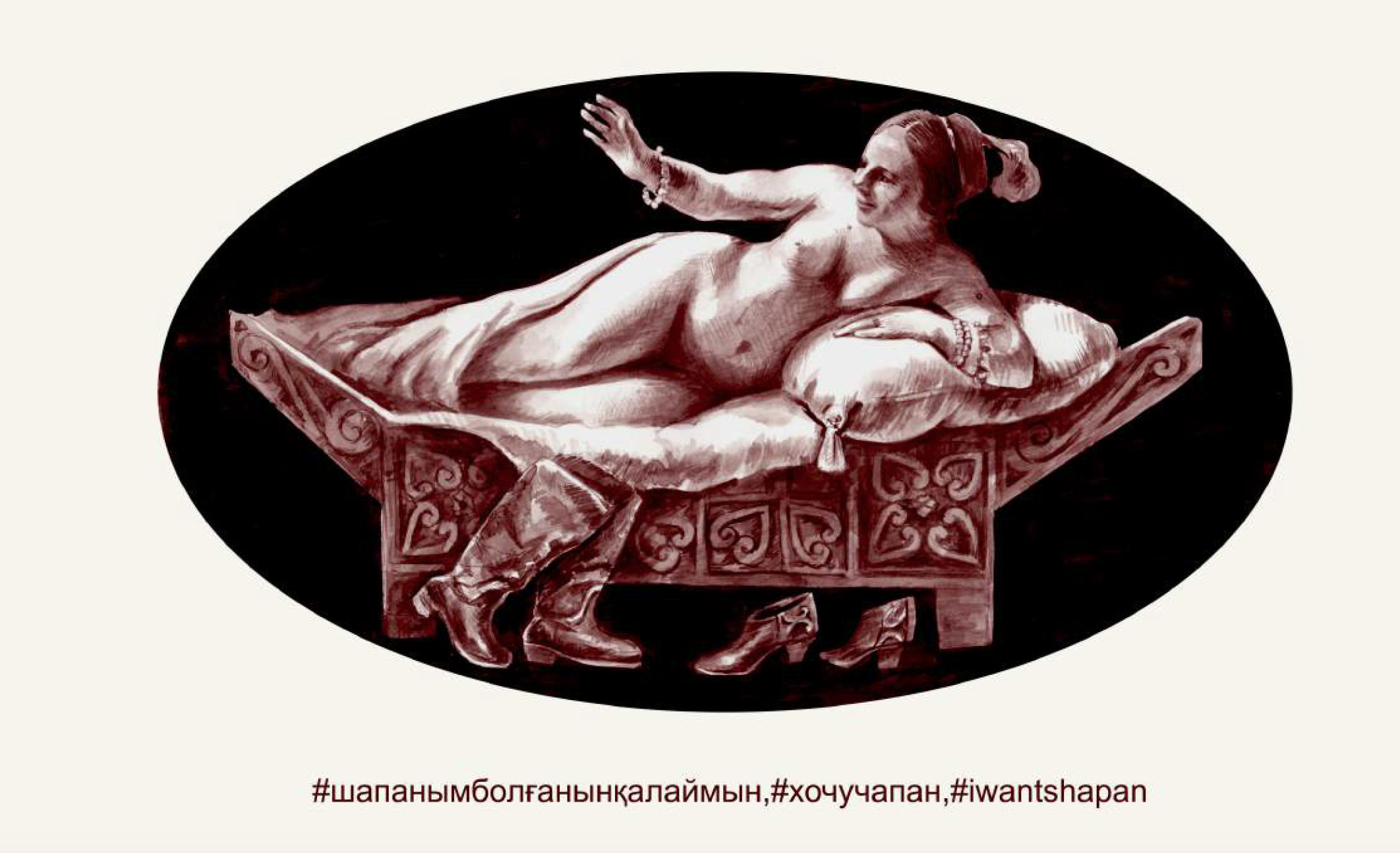

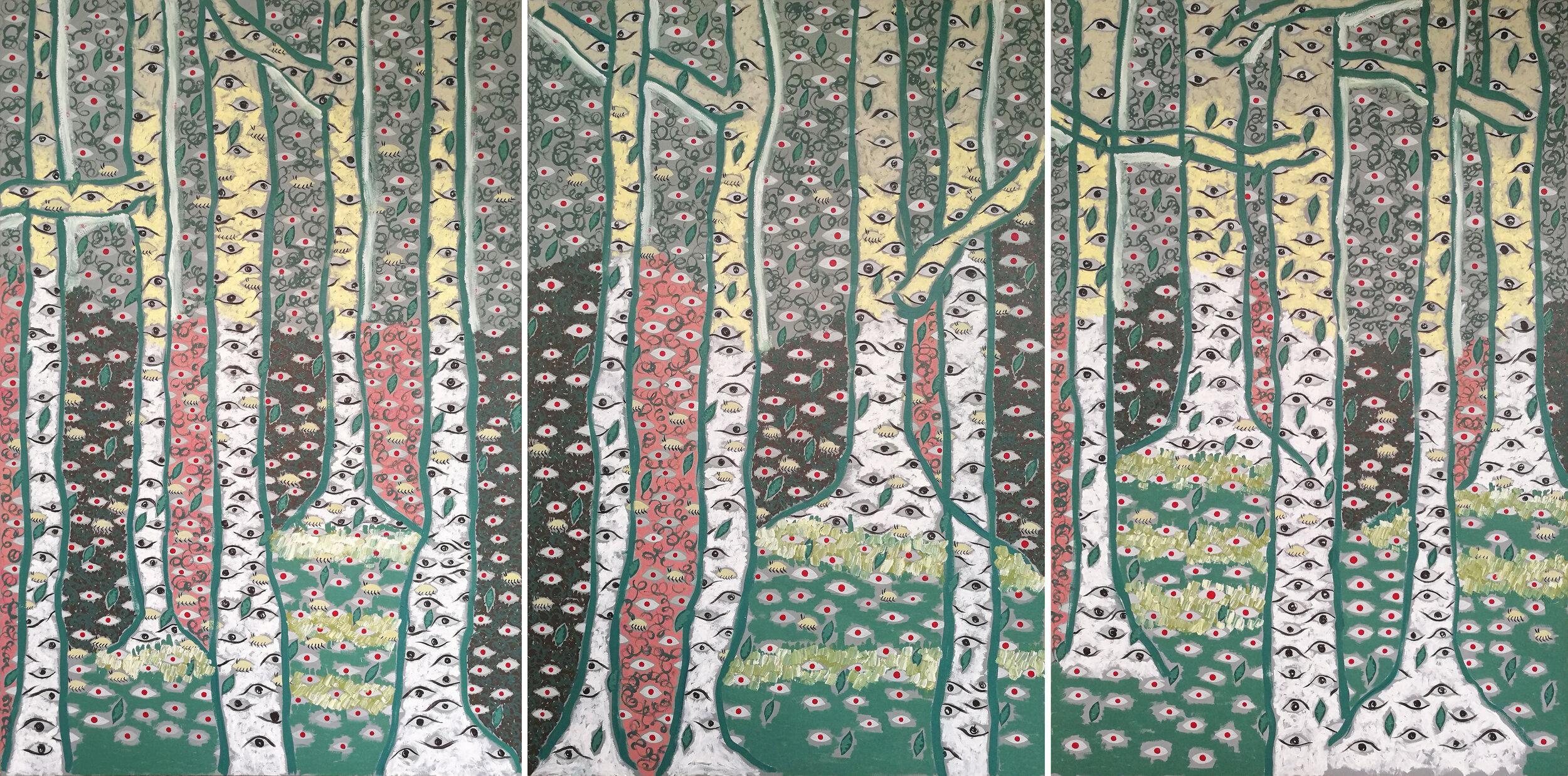



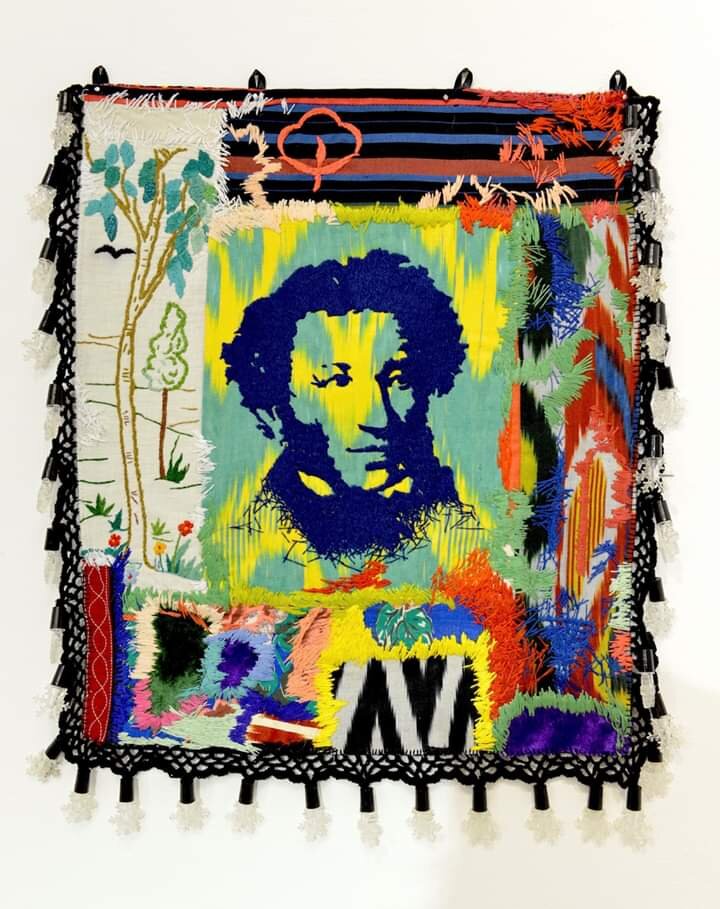


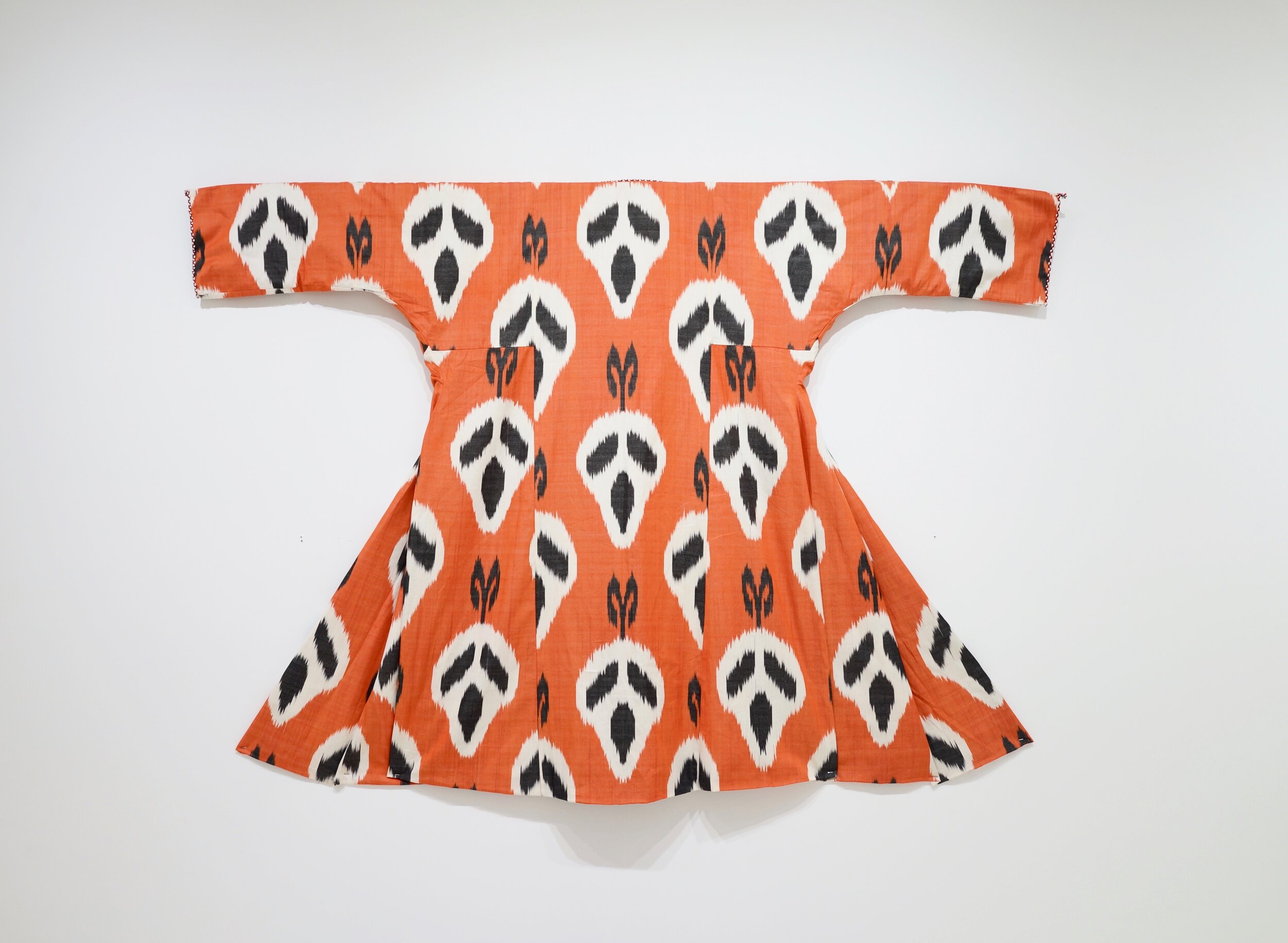
Sapar Contemporary is proud to present an exhibition of three leading female artists from the Stans - Central Asian countries landlocked between Russia and China that draw a lot of attention as the last unexplored art frontier in Asia. Saule Dyussenbina (Kazakhstan), Dilyara Kaipova (Uzbekistan) and Aziza Shadenova (Kyrgyzstan, Uzbekistan) are presenting new mythologies that blend their unique nomadic perspectives on feminism, urbanism and ecology with their cultural roots. Poignant and whimsical, the artworks insert women into these new narratives and myths, questioning the contours of Western feminism. These female artists propose a revisionist art history that inserts both women and Greater Asia into the Western art historical canon. They do so with a sense of humor and pictorial confidence while paying homage to traditional ornaments, ancient textile traditions and a deep influence of 20th century Russian avant-garde in Central Asia.
Encoding Western pop iconography — Batman, Darth Vader, Mickey Mouse, the mask from "Scream" — into the traditional Uzbek textile technique of ikat, Dilyara Kaipova’s artwork comments on the passage of cultural knowledge via global routes. In the age of the internet, Western mass culture pervades even the most remote regions of the world. Yet milennia-old pre-modern silk road trade routes — an earlier form of networked global culture — carried Uzbekistan’s trademark textile secrets as far as Europe and Tokyo. The suppression of local traditions under the Soviet rule would have obsolesced the ikat tradition altogether had it not been for a handful of weavers. Kaipova works with these weavers who preserved and perfected the Central Asian textile technique in the bleak and inaccessible Ferghana Valley, often considered the cradle of the weaving tradition. Colorful, thoughtful, critical, and humorous, Kaipova’s work brings older forms of knowledge into the 21st century.
Born in Uzbekistan and raised in Kyrgyzstan, Aziza Shadenova is a London-based artist whose paintings, photographs, sculptures, and installations probe the complexity of Sovietization on Central Asian women from 1920-1930: while offering education and professional advancement, this new order also attempted to erase traditions. The figures in Shadenova’s works are conflicted — silent, witnessing, but also seeking liberation through an alternate sensual realm. Women’s hair is depicted throughout Shadenova’s work: as if her own corporeal self has betrayed her, a young woman’s braid extends from her head becoming a menacing snake, shackles, or intestines. A long braid juts out of a vase like a proud flower, suggesting a liberation and bodiliness. Another common motif, the eye, proliferates throughout Shadenova’s works, a reminder of Central Asian shamanic past and a witness to nomadic cultures in transition.
Saule Dyussenbina remixes motifs from Kazakh folks culture (ram horns, horses, eagle hunters) with contemporary icons (Chanel logos, golf balls, starchitecture) to question what we have become used to and what could be. In her series of dazzling, kaleidoscopic wallpaper prints, flies, jumping horses, and surveillance cameras repeat in ornamental patterns until they become no longer recognizable, or normalized. Dyussenbina’s prints, resembling the two-tone prints on a British tea set, provide interesting provocations: What if the naked guy in Leonardo’s “The Measure of Man” or Van Gogh in his self-portraits wore traditional Kazakh garb? Whimsical, the ludic nature of Dyussenbina’s work in fact belies a daringness to ask hard questions about the contingencies and absurdities of art history.
About the Artists
Saule Dyussenbina (Karaganda, 1971) is a Kazakh multimedia artist known for her whimsical revisions of Western art history and humorous inserts of Central Asian culture, Asian female artists and herself into the male dominated Western canon. In her pantings, watercolors, prints and animations she addresses feminism, urbanism, Central Asian identity, and the role of the artist through the prism of her nomadic heritage. Notable recent exhibitions include "Post-Nomadic Mind" at the Wapping Project, London (2018), "Postcolonial Art in Central Asia" at the Gedok Gallery in Karlsruhe (2018), "Eurasian Utopia: Post Scriptum" at Suwon Park Museum of Art, South Korea (2018), and "Kultureller Dialog in Eurasien" in Vienna, Austria (2019).
Dilyara Kaipova (Tashkent, 1967) works with Uzbek textiles, reviving its centuries-long traditions, to make this medium relevant to current socio-cultural and ecological problems of the region and its post-modern history. Kaipova's practice is located at the interaction of folk artisan traditions and contemporaneity. The artist designs original patterns and produces her ikat fabrics in collaboration with traditional masters. She also sources and uses vintage fabrics and embroideries – local fabrics of the Soviet period and ‘naive’ homemade embroideries. Kaipova’s textile work was first shown in Tashkent in 2016 and since then has been displayed in exhibitions in Kyrgyzstan, Russia, Georgia and the UAE.
Aziza Shadenova (Urgench, 1989) is a Kazakh artist raised in Kyrgyzstan and Uzbekistan. She works in different mediums such as: painting, video, photography, sculpture and performance. Shadenova was one of the few young artists featured in the Central Asian Pavilion at the 55th Venice Biennale (2013). She has participated in group shows at Sotheby’s, London ; 4th Moscow international Biennale for young art, Moscow; Kyrgyz National Museum of Fine Arts, Bishkek; EMMA Espoo Museum of Fine Arts, Espoo; Home gallery,Manchester; as well as in France, Luxembourg, Switzerland, Argentina and around the UK. Aziza lives and works in Hastings, UK.

